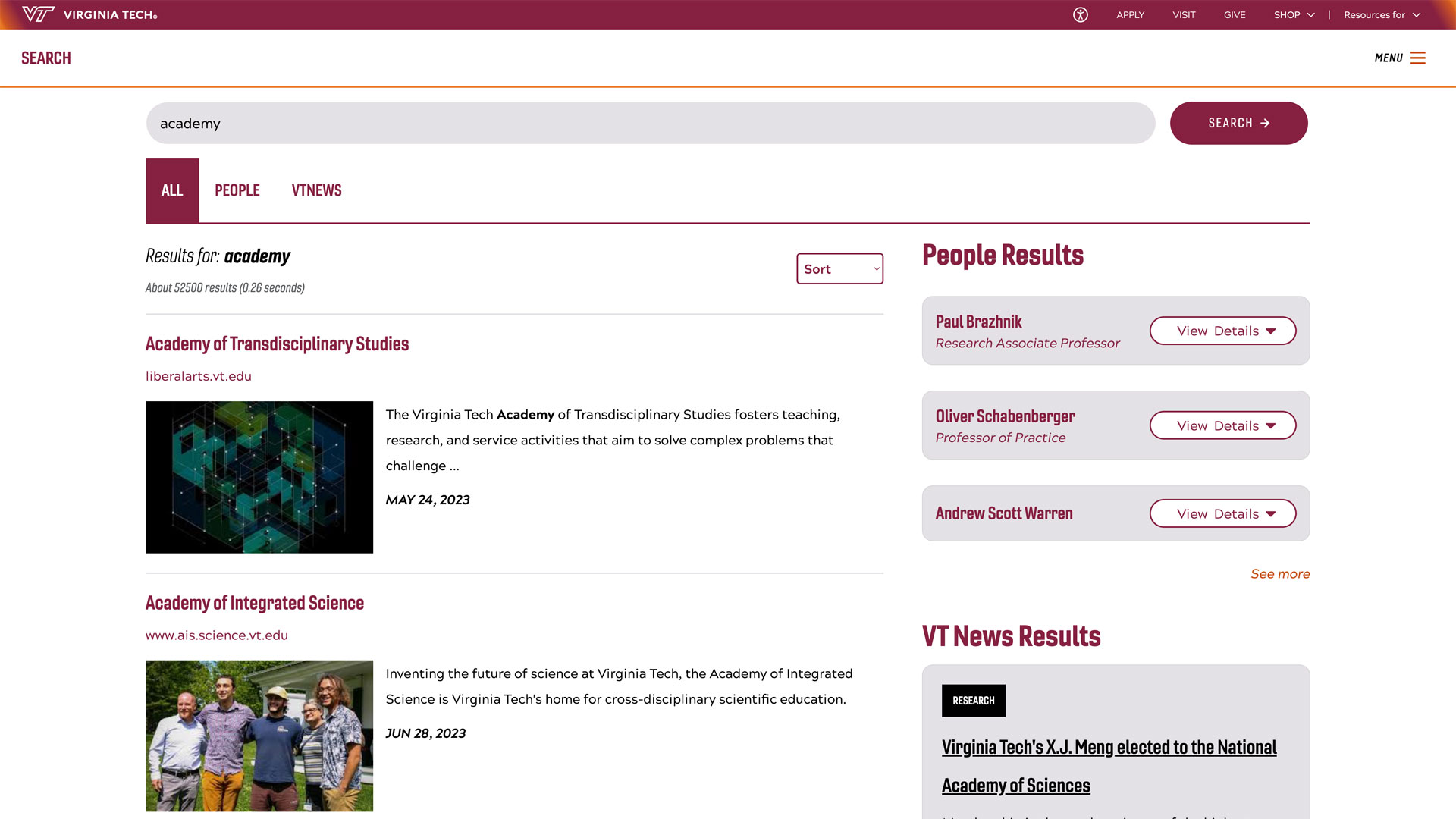From Blacksburg to Venice: International Archive of Women in Architecture celebrates 40 years of global impact
After decades of championing and preserving women’s contributions to architecture, the archive has launched a year-long celebration, including a first-of-its-kind digital exhibit in parallel with the Venice Biennale.

What began 40 years ago as a bold initiative at Virginia Tech has grown into a global force for recognition and change.
The International Archive of Women in Architecture (IAWA) preserves and amplifies the contributions of women architects, reclaiming voices long excluded from mainstream architectural narratives. Today, it is a vital resource for education, research, and empowerment, honoring the often-overlooked work of women who have shaped the built environment.
“Reaching this anniversary is both a celebration and a call to action,” said Paola Zellner Bassett, associate professor of architecture in Virginia Tech’s College of Architecture, Arts, and Design and the archive's center director. “Our mission has always been to preserve and promote the work of women architects, particularly those excluded from historical accounts. This year, we’re looking back at what we’ve accomplished and looking forward to how we can continue this critical work.”
To honor this milestone, the IAWA will host a series of events featuring an immersive digital exhibition, “40x40,” during La Biennale Architettura 2025, one of the most prestigious international architecture exhibitions, showcasing groundbreaking ideas and innovations in the field. Featuring original works preserved in the archive's collections, “40x40” will blend art, architecture, music, and immersive technology to showcase the transformative contributions of women in the field worldwide.

A legacy of preservation and recognition
The IAWA was founded in 1985 by Milka T. Bliznakov, professor emerita of architecture at Virginia Tech and a trailblazer in her own right. Having fled communist Bulgaria and established a career in the United States, Bliznakov recognized the glaring absence of women in architectural histories. Her vision extended beyond documenting their work; she sought to give women a platform to reclaim their rightful place in the narrative of architecture.
In a 1989 newsletter, Bliznakov wrote, “The omission of women’s contributions, neglected for so long, needs immediate rectification.” Guided by this mission, she contacted architects worldwide, laying the foundation for what would become the only global archive dedicated to the work of women architects.
Today, the archive houses nearly 500 collections spanning 48 countries. These include the works of pioneers like Anna Wagner Keichline, the first registered woman architect in Pennsylvania, and Yasmeen Lari, the first female architect in Pakistan. Each collection tells a unique story of creativity, perseverance, and impact. The collection is part of Virginia Tech’s Special Collections and University Archives.
“The archive is more than a collection of documents,” Zellner Bassett said. “It’s a living, breathing entity that connects us to the past while shaping the future of architectural practice and scholarship.”
"The IAWA has been an integral part of our community for four decades, connecting us to the broader world of architecture and celebrating the many voices that have shaped both our built environment and the history of ideas,” said Jim Bassett, director of the School of Architecture. “Its impact on the student experience is profound, and it is inspiring to see the archive influencing the next generation of architects."

A year of celebration
The 40th anniversary celebrations begin Feb. 23 with a preview at the Cube in the Moss Arts Center, offering attendees an intimate look at the “40x40” exhibition. A second preview follows on March 20–21 in Torgersen Hall during the 2025 IAWA Symposium.
In addition, the 2025 IAWA Symposium will display the recently acquired collection “1x1 Japan,” featuring 46 original works of members of UIFA Japon, inviting visitors to engage with original sketches, personal letters, and detailed designs highlighting women's profound contributions to architecture.
“Touching these artifacts — seeing the erasures, the changes, and the handwritten notes — offers a deeply personal and emotional connection to these architects and their journeys,” Zellner Bassett said.
The IAWA also will present the “1x1 Virginia Tech Alumnae” collection and exhibition, celebrating the achievements of university architecture alumnae. This showcase will feature a defining piece from each participant accompanied by personal reflections. Debuting next fall in Washington, D.C., and Blacksburg, the exhibition will highlight the diversity and impact of women's contributions to the field. A call for submissions will be announced in the spring, inviting all alumnae — beginning with the inaugural graduating class of 1969 — to share their most pivotal works for inclusion in this inspiring collection.

A vision for Venice
The centerpiece of the anniversary celebration, “40x40,” will run from May 10 to Nov. 23 in the Palazzo Bembo as a participant of the collective exhibition “Time, Space, Existence” hosted by the European Cultural Centre in Venice in parallel with La Biennale Architettura 2025.
Designed in collaboration with Nicholas Polys, affiliate professor of computer science and director of visual computing for Advanced Research Computing, the exhibit will integrate cutting-edge technology, music, and archival materials to craft a truly immersive experience.
Ben Sandbrook, systems engineer in Advanced Research Computing, and Charles Nichols, associate professor in the School of Performing Arts, bring their expertise to enhance the technical and auditory elements of the exhibit.
Elizabeth Gray, designer and IAWA liaison, played a key role in shaping the exhibit’s design, while Jade Snelling, IAWA archivist, provided invaluable assistance in curating archival materials. Together, their contributions will create a multisensory journey through the past, present, and future of women in architecture.
“This is a global stage, and we’re thrilled to bring the voices of these women to Venice,” Zellner Bassett said. “The exhibit is not just about architecture, it’s about storytelling, visibility, and ensuring that the contributions of women are celebrated and remembered.”
Beyond preservation: Shaping the future
As the IAWA marks this milestone, its mission continues to evolve. Zellner Bassett envisions a future where the archive fosters a global network of similar initiatives, encouraging countries to establish their own repositories to preserve the legacies of women architects. The archive will host a design competition in the spring, inviting all architects worldwide to dream of this future collectively.
One of its most treasured collections is that of Lois Gottlieb, an apprentice of Frank Lloyd Wright, whose work has inspired multiple studies and publications. Other collections, such as Melita Rodeck’s hand-drawn heliport designs or Kimiko Suzuki’s meticulously crafted Japanese residential plans, offer glimpses into the brilliance and dedication of women architects across regions and generations.
“The gaps in the archive are as significant as the collections themselves,” Zellner Bassett said. “They spark curiosity and invite us to uncover the untold stories, ensuring no voice is left unheard.”
Join the celebration
The IAWA invites the community to celebrate this milestone. Visit the IAWA’s website for more information about the initiatives and events planned throughout the anniversary year in Blacksburg; Washington, D.C.; and Venice.
“Together, we can honor the past, celebrate the present, and build a more inclusive future for everyone in the field,” Zellner Bassett said.
“Virginia Tech aspires to be a global land-grant university and to enhance quality of life for people around the world. The IAWA exemplifies this aspiration,” said Lu Liu, dean of the College of Architecture, Arts, and Design. “By archiving, exhibiting, and celebrating the accomplishments of women architects, IAWA will continue to inspire current and future architects who create beautiful, enjoyable living and working environments for communities everywhere.”




